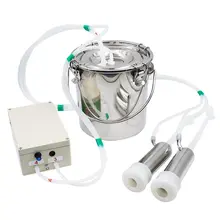Choosing the Right Transport Cages for Rabbits to Ensure Safe and Comfortable Travel
Jul . 30, 2024 22:23 Back to list
Choosing the Right Transport Cages for Rabbits to Ensure Safe and Comfortable Travel
The Significance of Rabbit Transport Cages
Transporting rabbits safely and humanely is a crucial aspect of rabbit care and management, especially for breeders, pet owners, and animal shelters. Rabbit transport cages are specially designed carriers that ensure the safety, comfort, and well-being of rabbits during transit. This article explores the importance of these cages, the factors to consider when choosing one, and best practices for transporting rabbits.
One of the primary reasons for using transport cages is to minimize stress for the rabbits. Rabbits are naturally sensitive animals, and any change in their environment can cause anxiety. A proper transport cage helps to create a safe space for them, which can significantly reduce their distress during travel. The design of these cages often includes features such as adequate ventilation, secure locking mechanisms, and a cozy interior, which make it easier for rabbits to feel protected.
When selecting a transport cage, size matters. The cage should be spacious enough for the rabbit to stand up comfortably, turn around, and lie down. A cage that is too small can lead to panic and discomfort, while a cage that is too large may not provide the sense of security that rabbits need. Additionally, the material of the cage is important. Durable materials that are easy to clean, such as plastic or reinforced fabric, are preferable. Avoid wooden cages, as they can absorb odors and are harder to maintain.
Another key feature of rabbit transport cages is ventilation. Adequate airflow is essential to keep the rabbit cool and comfortable, especially during long trips. Cages with wire sides or ventilation holes can help ensure proper airflow. Furthermore, the cage should be well-ventilated yet secure enough to prevent the rabbit from escaping or being disturbed by outside elements, such as other animals or loud noises.
rabbit transport cages

In addition to size and ventilation, safety features are paramount in any transport cage. Look for cages with secure locking mechanisms to prevent accidental openings. The base of the cage should be solid and easy to clean. It’s also wise to line the bottom with soft bedding to provide added comfort and absorb any accidental messes during transit.
Best practices for transporting rabbits involve more than just having the right cage. Before embarking on a trip, it’s advisable to familiarize your rabbit with the transport cage by allowing them to explore it at home. This acclimatization can reduce anxiety during the actual transport. When traveling, avoid sudden stops and jerky movements while driving, as these can frighten and stress your bunny.
Ensure that you maintain a stable and comfortable temperature during transport. Extreme temperatures can be harmful to rabbits, so it is crucial to keep the environment within a suitable range. In warmer months, avoid leaving the rabbit in a hot vehicle, and in colder months, make sure they are adequately insulated.
Furthermore, it’s important to provide water during long journeys. A travel-friendly water bottle can be a practical solution. However, be cautious and avoid offering food right before a trip as it may lead to motion sickness. Instead, offer a light meal a few hours prior to transport.
In summary, rabbit transport cages play a vital role in ensuring the safety and comfort of rabbits during transit. By choosing the right cage and following best practices for transportation, rabbit owners can reduce stress and create a more positive experience for their furry friends. Whether adopting a new pet, visiting a veterinarian, or attending a rabbit show, proper transport is essential for the well-being of these delicate animals.
-
Hot Sale 24 & 18 Door Rabbit Cages - Premium Breeding Solutions
NewsJul.25,2025
-
Automatic Feeding Line System Pan Feeder Nipple Drinker - Anping County Yize Metal Products Co., Ltd.
NewsJul.21,2025
-
Automatic Feeding Line System Pan Feeder Nipple Drinker - Anping County Yize Metal Products Co., Ltd.
NewsJul.21,2025
-
Automatic Feeding Line System - Anping Yize | Precision & Nipple
NewsJul.21,2025
-
Automatic Feeding Line System - Anping Yize | Precision & Nipple
NewsJul.21,2025
-
Automatic Feeding Line System-Anping County Yize Metal Products Co., Ltd.|Efficient Feed Distribution&Customized Animal Farming Solutions
NewsJul.21,2025






